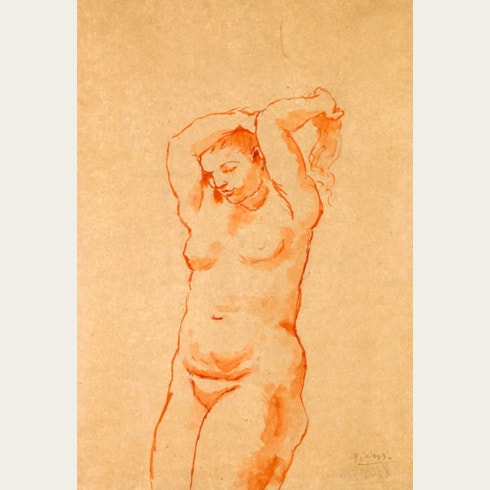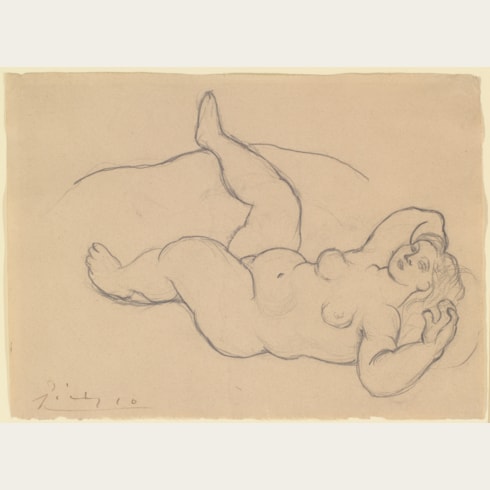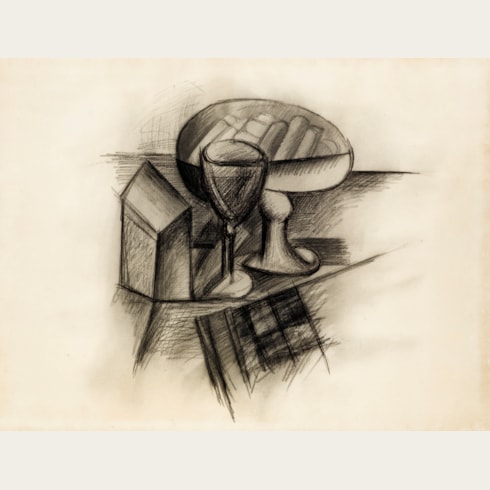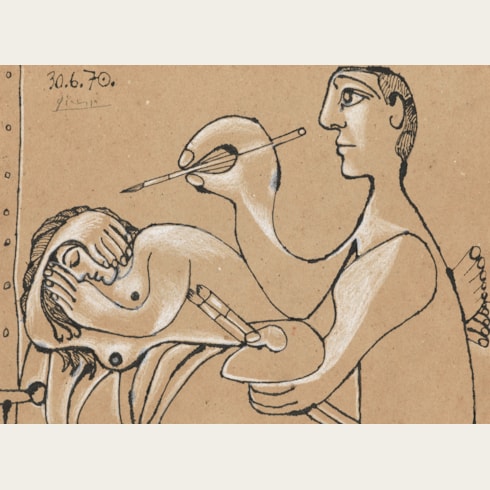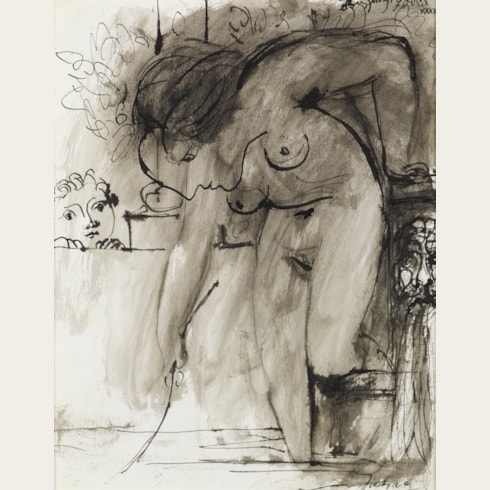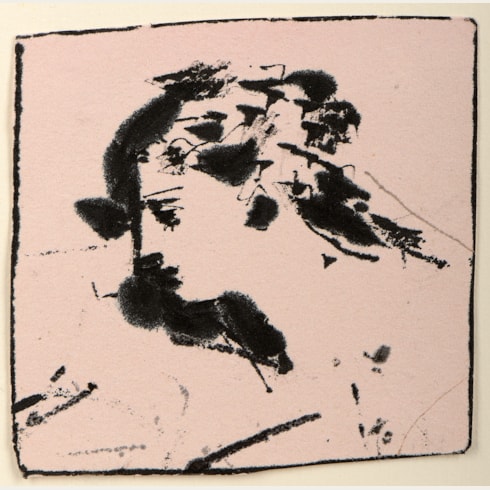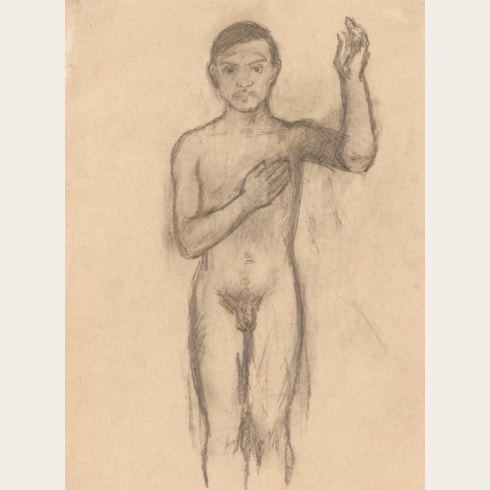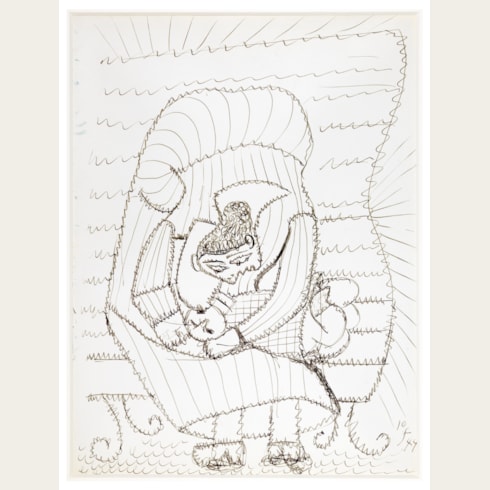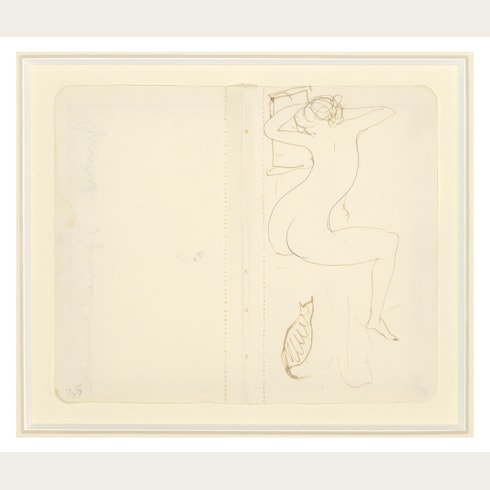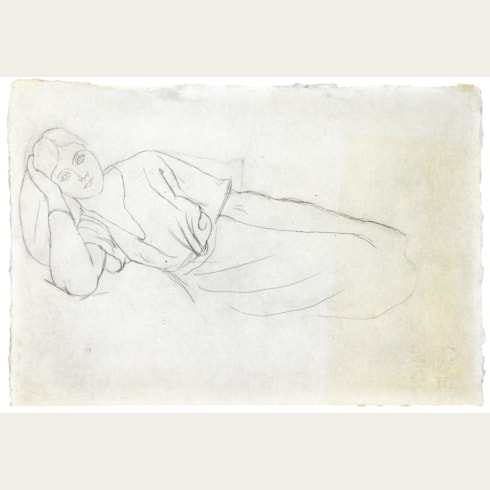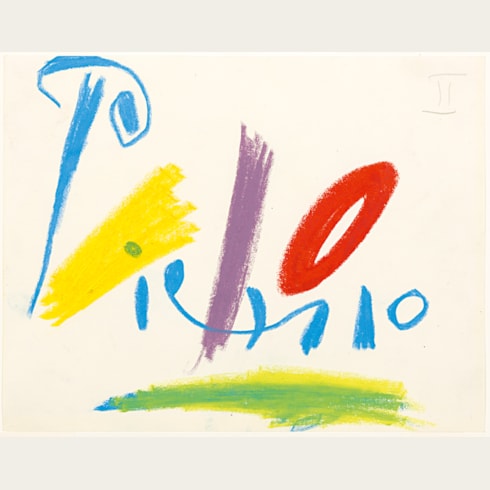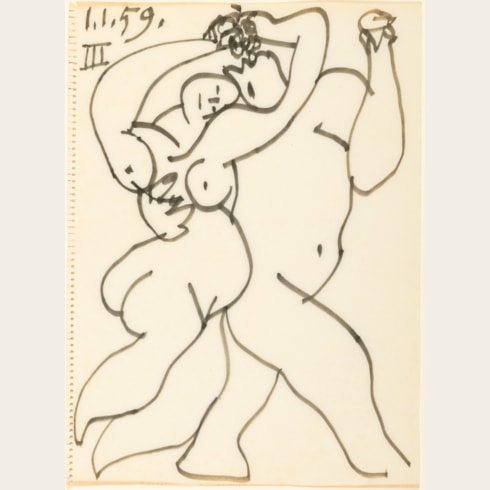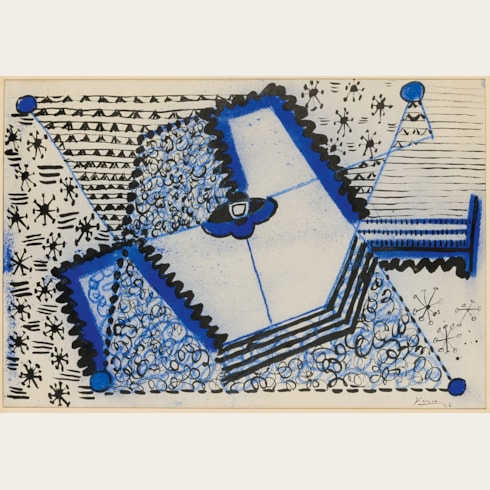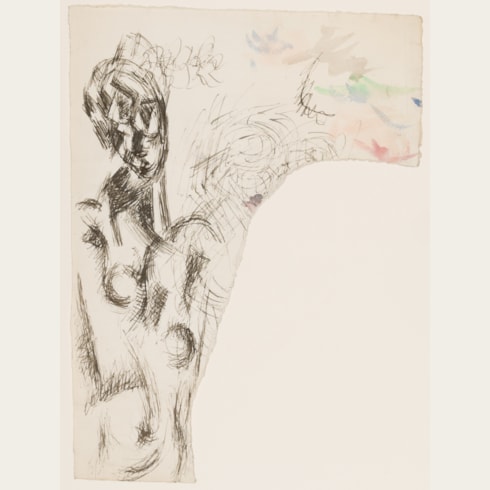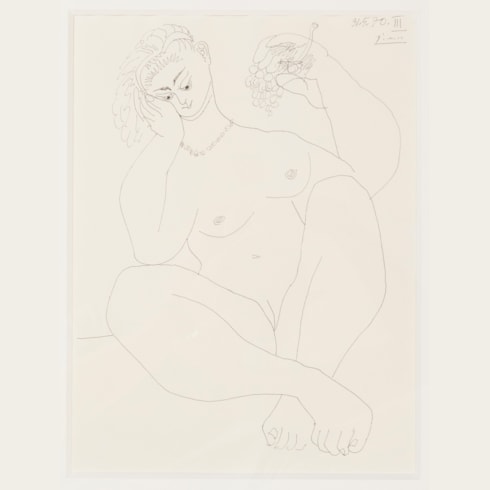Pablo PICASSO
(Malaga 1881 - Mougins 1973)
Landscape at Juan-les-Pins
Dated 13-7-20- in pencil at the upper right.
Numbered 1056 / 36 on the verso.
270 x 422 mm. (10 5/8 x 16 5/8 in.)
Richardson further notes of the artist at Juan-les-Pins: ‘When he installed himself in a new place, Picasso usually did drawings of the area to get his bearings and map out a kind of cosmology for himself. A turning in the road, a stretch of railway track, a view of the sea, telegraph poles: such are the subjects of his sketchbook notations. He also did colourful oil sketches of local villas in which he has fun with their distinctive towers and balustrades.’ Another scholar has pointed out that ‘In his sketchbooks or on loose sheets, the artist offers us quite literal descriptions of the seascape of Juan-les-Pins and a number of particular aspects of the villa at which he was staying. These works seem to be almost domesticated. Picasso had no compunction in describing his real surroundings, even though he was aware that the true reality of things might be revealed to him at the most unexpected moment.’
Drawn on the 13th of July 1920, shortly after Picasso and Olga had settled into the Villa des Sables, this drawing may be associated with a handful of pencil landscapes of Juan-les-Pins made between July and September 1920. These views of rooftops, trees and neighbouring villas, drawn from a window at the Villa des Sables, include a sheet in the Musée Picasso in Paris and several others in private collections5 A number of landscape drawings of rooftops at Juan-les-Pins are also found in a small sketchbook used by Picasso in the summer of 1920, which contains two pencil sketches closely related to the left half of the composition of the present sheet. A small oil sketch on canvas depicting the same view of a house among gardens and foliage, dated the 28th of July 1920, may also be associated with this drawing. Likewise executed during this fertile summer was a small, decorative painting of houses at Juan-les-Pins, today in the collection of the Musée Picasso in Paris.
In later visits to the Côte d’Azur in the 1920s and 1930s, Picasso stayed at other rented villas in Juan-les-Pins and Antibes. Indeed, apart from the period of the Second World War, when he remained in Paris, he was to return to the Riviera almost every summer until the end of his life; not only to Antibes and Juan-les-Pins but also Saint-Raphaël, Vallauris, Cannes and Mougins, where he lived from 1961 until his death in 1973. The Cap d’Antibes was ultimately the home of the first museum dedicated to the painter in his lifetime; in 1966 the Château Grimaldi in Antibes, where Picasso had a studio for several months at the end of 1946, was renamed the Musée Picasso, and today contains over two hundred works by the artist.
The present sheet was until recently in the collection of the artist’s granddaughter Marina Ruiz Picasso (b.1951), the only daughter of Picasso’s eldest son Paulo. Though her relationships with both her father and grandfather were troubled, Marina was the only legitimate grandchild of the artist alive at the time of his death in 1973, and therefore received the second-largest inheritance, after that of Picasso’s second wife Jacqueline. As John Richardson has noted, Marina Picasso ‘differs from the artist’s other five heirs in that she has made a point of exhibiting as much as possible of her magnificent collection in a succession of traveling exhibitions…for students of modern art in cities which have never seen a Picasso retrospective, these exhibitions have been a revelation.’
‘I do not know if I am a great painter, but I am a great draughtsman.’ (Picasso to Max Jacob).
Provenance
By inheritance to the artist’s granddaughter, Marina Picasso, Cannes, Geneva and New York.
Literature
Exhibition






